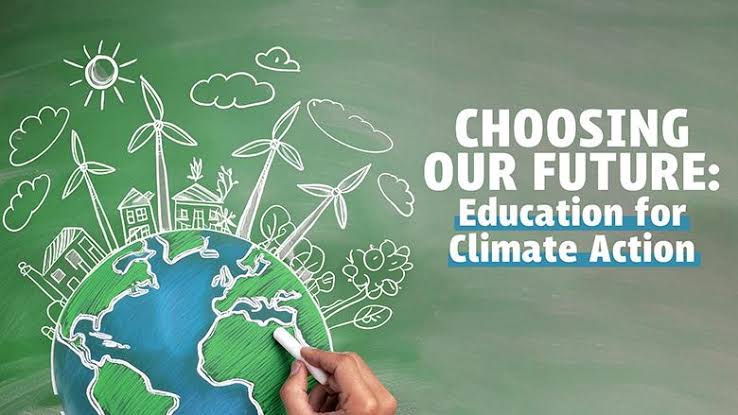By Saba Naheed
Teachers have long been the torchbearers of social change — from literacy campaigns to public health awareness — and now, they must step into another critical role: climate advocacy. In a world increasingly shaped by environmental instability, the influence of educators extends far beyond textbooks and classrooms. As trusted voices in communities, teachers have the power to inspire climate consciousness, shape public opinion, and even influence policy.
In many regions, especially in the Global South, teachers are not only facilitators of learning but respected figures in society. Their words carry weight, and their actions model civic responsibility. When educators engage in climate advocacy — whether through local initiatives, school campaigns, or public dialogue — they become catalysts for environmental change within their communities.
A teacher who speaks about deforestation, climate migration, or sustainable farming doesn’t just educate students — they educate families, parents, and local leaders. Their reach is intergenerational and their impact deeply rooted.
The climate crisis affects every learner. From flooded schools to heat-stressed classrooms and disrupted food systems, the consequences of climate change are already undermining education systems worldwide. Yet, educators are often left out of the climate conversation — both in policymaking spaces and environmental media.
It’s time to change that. Teachers must not only teach climate literacy but be equipped to participate in wider advocacy efforts — attending forums, writing op-eds, and joining climate campaigns. When educators show visible commitment to climate justice, they normalize environmental activism as part of civic life.
Policy change doesn’t begin in conference halls — it begins with awareness. Educators can serve as vital links between climate science and public understanding, translating technical knowledge into accessible narratives. By participating in school board discussions, local climate councils, and national education forums, teachers can advocate for climate education funding, sustainable infrastructure, and inclusive policy frameworks.
Moreover, teachers can help shape climate education policies to reflect regional needs, indigenous knowledge, and cultural values. Their experience on the ground gives them the insight that distant policymakers often lack.
One of the greatest powers teachers hold is their connection to youth. Climate advocacy is most impactful when students are not just informed but empowered. Through project-based learning, debate clubs, model UNs, and climate-themed art or media projects, teachers can mentor students into confident climate advocates themselves.
When students and teachers co-create advocacy campaigns — from local cleanup drives to social media awareness — the message becomes louder, more diverse, and generationally unified.
To fulfill their potential as climate advocates, teachers need more than passion — they need tools. Ministries of education, NGOs, and media organizations must come together to offer:
● Professional training on climate science and communication
● Resource materials adaptable to different subjects and age levels
● Support networks for educators engaging in climate work
● Platforms for publishing and presenting climate education success stories
Without such support, the burden of climate advocacy remains an additional task rather than an integrated part of an educator’s mission.
In countries like Costa Rica and Finland, educators have taken central roles in advancing sustainability goals. From developing eco-curricula to participating in national panels, their advocacy has shaped both classroom learning and policy landscapes.
In Pakistan, rural teachers are leading tree-planting initiatives with their students. In the Philippines, teachers have created school-based early warning systems for climate disasters. These are not exceptions — they are examples of what becomes possible when teachers are empowered.
Educators are not on the sidelines of the climate fight — they are essential players. Their unique position allows them to influence hearts and minds, nurture responsible citizens, and build climate resilience from the ground up.
From chalkboards to climate talks, the journey of the teacher is evolving. And if we are to win the climate battle, it must.
About the Author

Saba Naheed is a Climate Communication & Education Strategist with over 20 years of experience in teaching and public engagement. Her work focuses on empowering educators to become climate advocates and fostering environmental awareness through education and media platforms.



